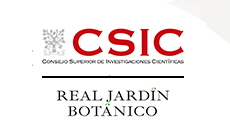Scientific Area
Detecting shifts in the mode of chromosomal speciation across the cosmopolitan plant lineage Carex
ID: 613 / 280
Category: Abstract
Track: Pending
Proposed Symposium Title: Detecting shifts in the mode of chromosomal speciation across the cosmopolitan plant lineage Carex
Authors:
Carrie M. Tribble1, José Ignacio Márquez-Corro2,3, Michael R. May4, Andrew L.
Hipp5, Marcial Escudero6, and Rosana Zenil-Ferguson7
Affiliations: 1 School of Life Sciences, University of Hawai'i at Manoa, Honolulu, USA 2 Royal Botanic Gardens, Kew. Richmond, Surrey, United Kingdom 3 Department of Molecular Biology and Biochemistry Engineering, Universidad Pablo de Olavide, Sevilla, Spain 4 Department of Evolution and Ecology, University of California Davis, Davis, USA 5 Herbarium and Center for Tree Science, The Morton Arboretum, Lisle, USA 6 Department of Plant Biology and Ecology, University of Sevilla, Sevilla, Spain 7 Department of Biology, University of Kentucky, Lexington, USA
Abstract:
Recent studies of angiosperm diversification have focused on the role of polyploidy as a driver of diversification. However, we know far less about the effects of single changes in chromosome number—dysploidy, which can mediate lineage diversification by affecting recombination rates, linkage, and/or reproductive isolation. Modeling the effects of dysploidy on diversification is mathematically and computationally challenging because many states and parameters are required to track changes in individual chromosomes, especially in lineages that have high variability in chromosome number. Additionally, we expect the processes of diversification and dysploidy to vary across clades, which requires modeling process variation to disentangle the effects of the observed trait (chromosome number) from the effects of unobserved traits on diversification. In this work, we propose a new state-dependent diversification model of chromosome evolution that includes numerous character states and explicitly models heterogeneity in the diversification process. Our model includes parameters that functionally link diversification rates to dysploidy rates and differentiate between anagenetic and cladogenetic changes. We apply this model to Carex (Cyperaceae), a model lineage for understanding dysploidy and diversification, leveraging chromosome number information and the most recent time-calibrated phylogenetic tree for over 700 species and subspecies. We recover distinct modes of chromosomal speciation across Carex. In one mode, dysploidy occurs very frequently and drives faster diversification rates. In the other mode, dysploidy is rare and diversification is driven by other factors, unmeasured in our analysis. This study is the first to demonstrate that dysploidy drives diversification in plants while considering unmeasured factors affecting diversification.




